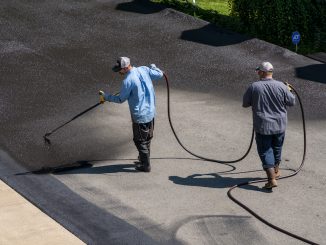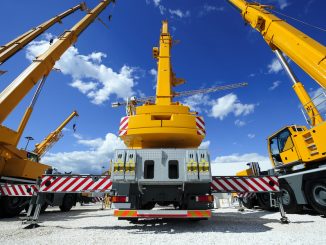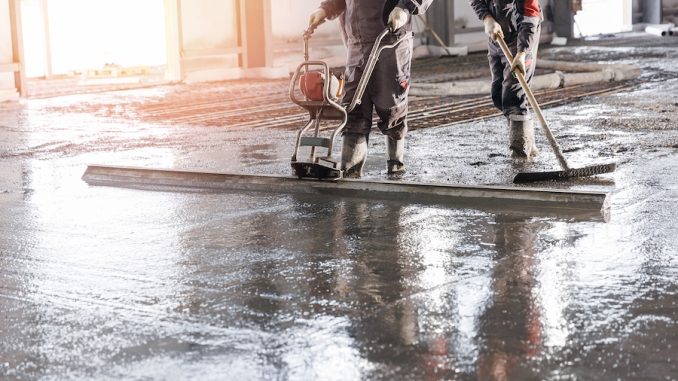
View the complete article here.
Concrete equipment encompasses a range of tools and machinery used to mix, transport, and finish concrete efficiently and effectively in construction projects.
Initially, concrete was mixed and laid by hand—a laborious process that made consistent quality difficult to achieve.
However, the industrial revolution of the 18th century introduced mechanical mixers—leading to today’s advanced, computer-controlled batching plants, pumps, and laser-guided screeds.
Now—concrete contractors are able to take advantage of increased productivity, improved quality, enhanced worker safety, and reduced environmental impact.
In this guide, we will provide an overview of the various types of concrete equipment used in construction projects—detailing their functions, applications, and the technological advancements from manual methods to modern machinery.
Types of Concrete Equipment
The primary types of concrete equipment includes…
Concrete Mixers
These machines are used for mixing concrete components to form a consistent concrete mixture. There are several types—such as drum mixers, which rotate to mix the concrete—and pan mixers, which use a stationary pan and rotating blades. Mixers are chosen based on the volume of concrete needed—with drum mixers being common for large-scale constructions and pan mixers for smaller, precise jobs.
Concrete Batching Plants
These installations are essential for combining the ingredients of concrete in specific proportions. They come in two main types: batch mix plants, which measure and mix the ingredients in batches—and continuous mix plants, which produce concrete continuously. Batch mix plants are widely used due to their ability to produce high-quality concrete in precise batches.
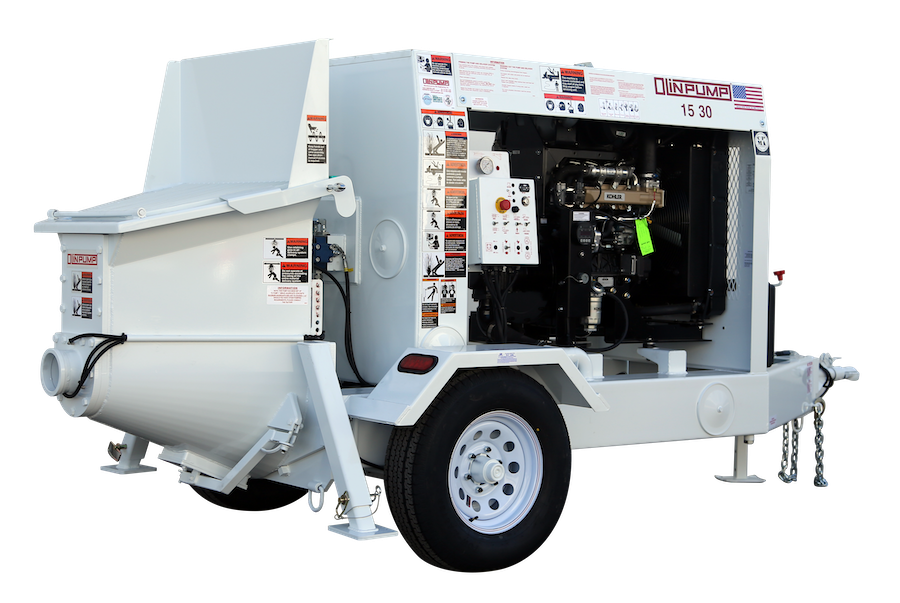
Concrete Pumps
To transport concrete to areas where a traditional mixer cannot reach, concrete pumps are used. Boom pumps have a robotic arm to distribute concrete accurately, while line pumps transport concrete through hoses at ground level. Their use is critical in large-scale projects for efficient and speedy concrete placement.
Concrete Vibrators
These tools are vital for compacting concrete and eliminating air bubbles that can weaken the structure. They come in internal types, which are inserted into the concrete—external, which are placed on the surface—and surface vibrators, which are used for compacting and smoothing the surface. To achieve the best results, concrete vibrators should be used immediately after pouring and be moved around the area to ensure comprehensive compaction.
Surface Finishing and Curing Equipment
What about the tools and machinery used to smooth and level concrete surfaces and to facilitate the proper hardening of concrete after it is poured?
Concrete Screeds
Screeds are essential tools for leveling and smoothing the surface of freshly poured concrete. They come in various types such as manual screeds, which are simple and used for smaller jobs—mechanical screeds, which are powered and used for larger areas—and laser screeds, which use laser technology to achieve highly precise leveling over large surfaces. Each type of screed is chosen based on the size and requirements of the project.
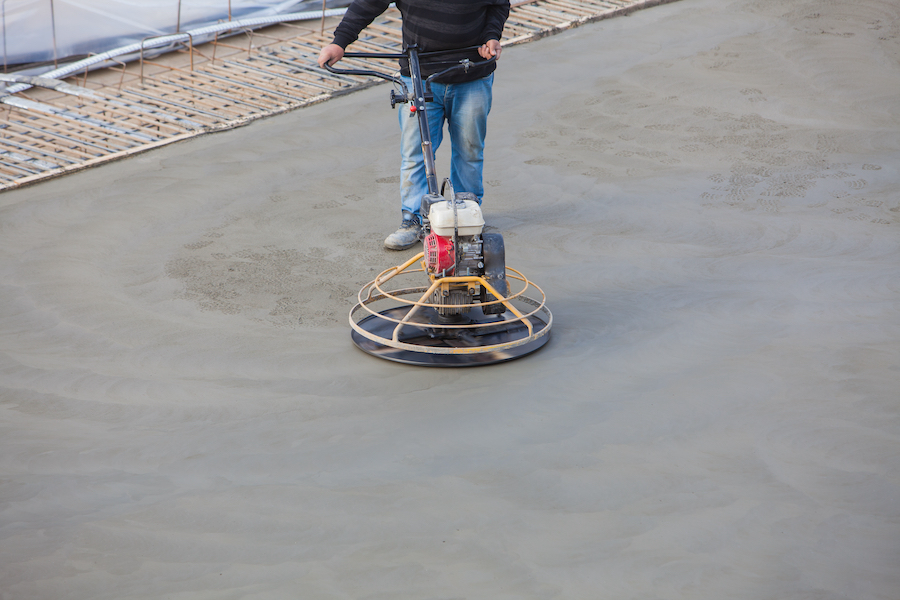
Troweling Machines
Troweling machines play a pivotal role in providing a smooth, polished finish to the concrete surface. These power tools come with blades that can be adjusted to various angles, allowing the operator to create a tight and smooth surface finish. They are typically used after the screeding process and are essential in indoor spaces where a fine finish is crucial, like in warehouses or retail spaces.
Curing Blankets
Curing of concrete is a critical phase that affects the material’s durability and strength. Curing blankets are used to maintain the proper temperature and moisture levels during the curing process, especially in extreme weather conditions. They come in insulated or non-insulated varieties and can be wet or reflective—depending on whether they are used to retain moisture, reflect heat, or provide insulation. Correct use of curing blankets helps prevent cracks, increases the concrete’s strength, and ensures a longer lifespan for the finished product.
Reinforcement and Demolition Tools
Reinforcement and demolition tools are specialized tools used to strengthen concrete structures with steel bars and to cut or demolish existing concrete for remodeling or removal.
Rebar Bender and Cutter
These tools are indispensable for working with reinforcement steel bars (rebar), which are used to reinforce concrete—adding tensile strength to the otherwise brittle material. Rebar benders and cutters allow workers to shape and cut rebar to the required specifications, ensuring that the reinforcement fits the design of the concrete structure precisely.
Concrete Saws
Concrete saws are powerful tools used to cut through hardened concrete, masonry, brick, asphalt, and other solid materials. They come in various types such as hand-held saws, walk-behind saws, and ride-on saws—each suited for different scales of demolition and resizing tasks. These saws are integral to construction and demolition projects—enabling precise cuts for creating openings, resizing structural elements, or completely removing sections of concrete.
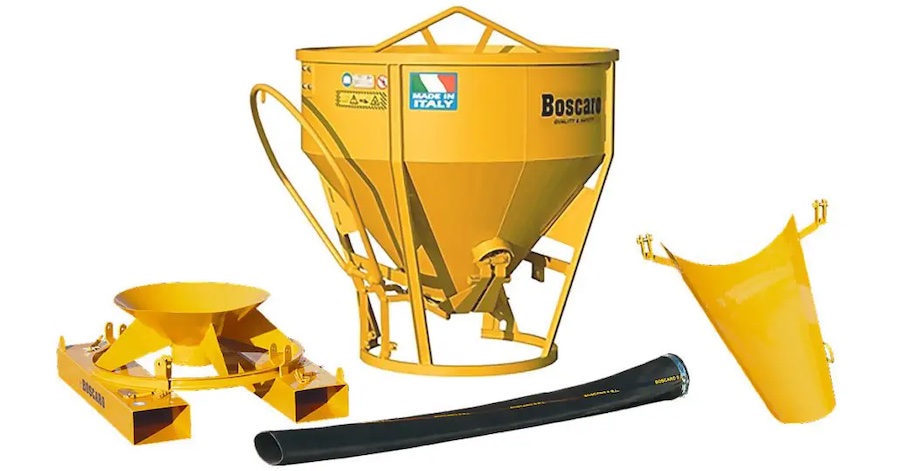
Auxiliary Equipment and Tools
Auxiliary equipment and tools refer to the supportive devices and tools—like concrete buckets, bull floats, power trowels, and wheelbarrows—that facilitate the transportation, finishing, and fine-tuning of concrete on job sites.
Concrete Buckets
Concrete buckets are important tools in the transportation and pouring of concrete, especially when the concrete mix needs to be transferred to places where direct pouring is not possible. They come in various sizes and designs, with some equipped with gates for controlled pouring and others designed for use with cranes for high-rise construction sites.
Bull Floats and Power Trowels
Bull floats and power trowels are crucial for achieving a smooth and level surface finish on freshly poured concrete. Bull floats are pushed across the wet concrete to smooth out the surface and to work the aggregate just beneath the surface—while power trowels are motorized tools that can be walk-behind or ride-on, used to create a hard, polished surface on the concrete.
Wheelbarrows
Wheelbarrows are the fundamental, yet often overlooked, tools of any construction site—providing a simple means to transport small volumes of concrete, tools, or construction materials—especially in confined spaces or across terrain unsuitable for larger equipment, making them indispensable in small-scale projects and tight spaces.
Safety and Maintenance of Concrete Equipment
When operating any type of concrete equipment, adhering to strict safety protocols is paramount to prevent accidents and ensure the well-being of workers. This includes wearing appropriate personal protective equipment (PPE)—such as gloves, safety glasses, and hearing protection—following manufacturer guidelines, securing the work area, and providing proper training on the operation of the equipment.
Regular maintenance is crucial to prolong the life of concrete equipment and ensure it operates at peak efficiency. Basic maintenance tips include routine cleaning to remove any concrete residue, lubricating moving parts to prevent wear and tear, checking for and replacing worn or damaged components, and storing equipment properly when not in use. Keeping a record of maintenance and repairs can also help track the equipment’s condition and anticipate future needs.
View the complete article here.
How do concrete curing blankets work, and why are they important?
Curing blankets maintain proper temperature and moisture levels during the concrete curing process, preventing cracks, increasing strength, and ensuring a longer lifespan for the finished product.
What safety measures should be taken when operating concrete equipment?
When operating concrete equipment, adhere to strict safety protocols, including wearing personal protective equipment (PPE), following manufacturer guidelines, securing the work area, and providing proper training on equipment operation.






































